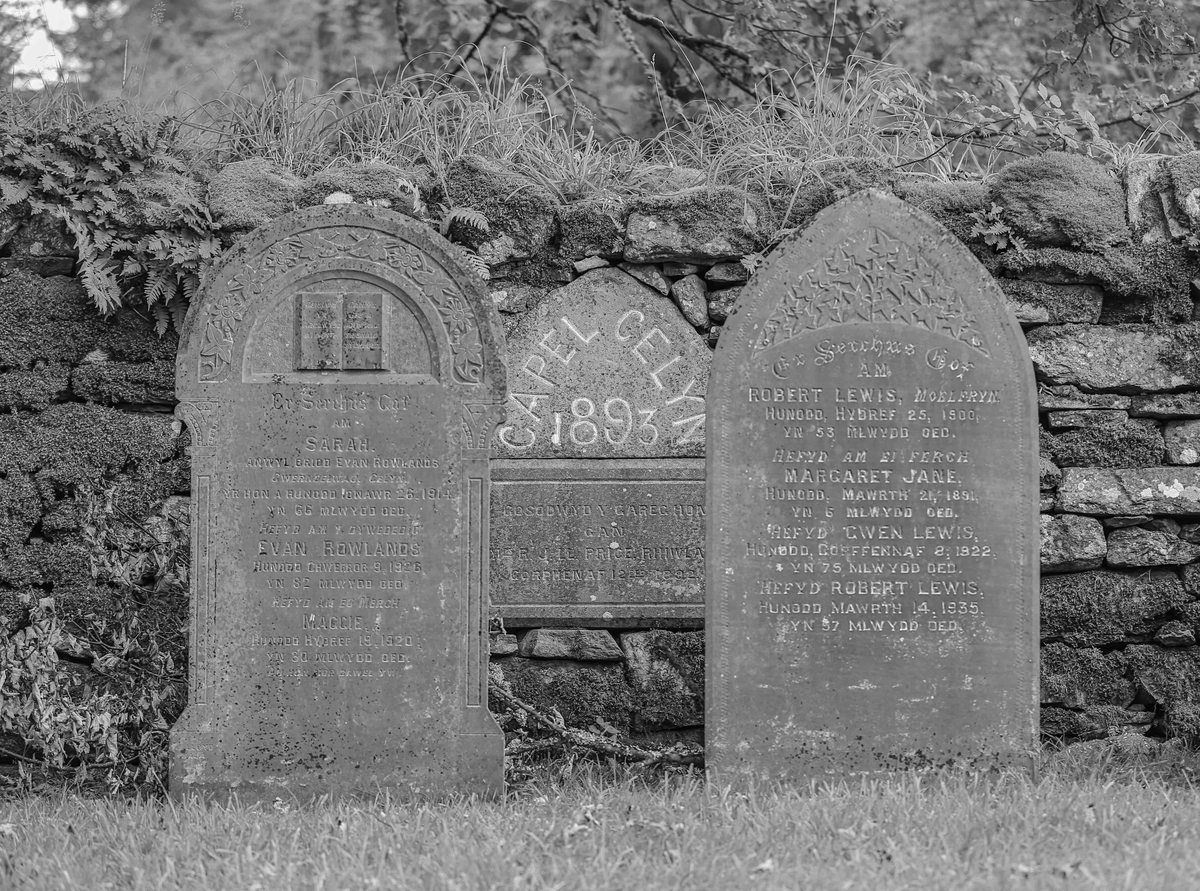Ail Wythnos yr Adfent
Afonydd ac Argaeau
Cofio’r hyn a gollwyd

Ym 1965, boddwyd cwm yng Nghymru er mwyn darparu dŵr ar gyfer dinas Lerpwl tua deugain milltir i’r gogledd-ddwyrain. Mwy na hanner can mlynedd yn ddiweddarach, prin yw’r digwyddiadau yn hanes diweddar Cymru (ac eithrio trychineb Aber-fan) sy’n parhau i liwio’n hymdeimlad o’n bywyd a’n hunaniaeth fel cenedl â ‘Thryweryn’. I lawer o bobl, mae’r enw ynddo’i hun yn ddigon i wneud yr hanes yn fyw eto.
Ym 1960, roedd Cyngor Dinas Lerpwl wedi cyflwyno mesur preifat gerbron Senedd San Steffan a fyddai’n gorfodi trigolion Capel Celyn i adael y cwm. Byddai’r pentref, y fynwent, y ffermydd, y swyddfa bost, y ffyrdd a’r caeau oll yn cael eu boddi i greu cronfa Llyn Celyn. Roedd defnyddio mesur preifat yn hynod anarferol ond roedd yn ffordd o osgoi’r angen am ymchwiliad cynllunio neu ymyrraeth gan yr awdurdod lleol. Pan roddwyd y mesur gerbron y Senedd, pleidleisiodd 35 allan o’r 36 o’r Aelodau Seneddol dros etholaethau Cymru yn ei erbyn. Ni rwystrodd hynny’r mesur rhag cael ei gymeradwyo ac yn y pen draw dinistriwyd deuddeg o dai a ffermydd a symudwyd 67 o bobl a drigai yn y cwm, er gwaethaf cyfnod hir o ymgyrchu mewn gwrthwynebiad i’r boddi.
Yn 2005, ymddiheurodd dinas Lerpwl am ei gweithredoedd. Roedd y datganiad yn cydnabod dyled y ddinas i’r miloedd o Gymry a ymgartrefodd yno ac a gyfoethogodd ei bywyd. Dywedwyd ymhellach: ‘Rydym yn ymwybodol o’r loes a achoswyd ddeugain mlynedd yn ôl pan drawsnewidiwyd dyffryn Tryweryn yn gronfa i gynorthwyo i ddiwallu anghenion Lerpwl am ddŵr… Ymddiheurwn am unrhyw ddiffyg sensitifrwydd ar ran y cyngor a fodolai ar y pryd a gobeithiwn y gellir adfer yn llwyr y berthynas hanesyddol a chadarn rhwng Lerpwl a Chymru. Mae pobl yn gofyn pam rydym yn ymddiheuro nawr. Mae ymddiheuro i gyfaill yn beth addas i’w wneud, mae’n rhan o gymodi … o gydnabod bod camgymeriadau wedi’u gwneud.’
Ymateb cymysg fu i’r ymddiheuriad ar y pryd. Ystyrid ei fod wedi dod yn rhy hwyr a theimlai rhai ei fod ond yn rhwbio halen yn y briw. Credai eraill fod yma gydnabod dilys bod camwedd wedi ei gyflawni, a hynny drwy gyfrwystra, ac na ddylid esgeuluso camwri hanesyddol o’r fath.
Mae amgylchiadau creu Llyn Celyn yn gymhleth ac wedi dod fwy i’r amlwg yn y blynyddoedd diwethaf gydag ymdrechion i warchod statws eiconig y cwm a’i hanes. Er ei bod yn wir i lawer o Gymry elwa ar gyfleoedd yn Lerpwl, fe enynnodd y ffordd y gwnaed y penderfyniad, yn ogystal â’r penderfyniad ei hun, elyniaeth ddofn a hirhoedlog yng nghalonnau llawer o Gymru. Cymuned drwyadl Gymraeg ei hiaith oedd Capel Celyn gyda diwylliant ffyniannus, ac fe’i dinistriwyd gan drefn lywodraethol San Steffan na hidiai o gwbl am na diwylliant na iaith y cwm. Ymddangosai’r weithred yn waeth na dirmygus, yn ddinistrio bwriadol yn wir, pan mai’r hyn oedd ei angen ar y pryd oedd gwarchod a diogelu.
Gwybod beth sy’n ein clymu ynghyd

Afon Hafren yw’r afon hiraf ym Mhrydain. Mae’n 220 milltir o hyd ac yn cludo mwy o ddŵr nag unrhyw afon arall yng Nghymru a Lloegr. Mae’n tarddu ar uchder o 610 metr yn y corsydd mawn cyfoethog ger Pumlumon yng Nghanolbarth Cymru ac yn llifo tuag at Fôr Hafren gyda’i haber ger Pontydd Hafren. Rheolir llif yr afon yn agos at ei tharddiad gan Gronfa Clywedog, sy’n lleddfu rywfaint ar beryglon llifogydd ymhellach i lawr yr afon. Yr argae bwtresi concrid yno yw’r argae concrid uchaf yn y DU, yn 72 metr o uchder a 230 metr o hyd.
Enynnodd adeiladu’r gronfa hon, fel creu Llyn Celyn ei hun, wrthwynebiad a phrotestio adeg pasio’r Ddeddf Seneddol a dechrau ar y gwaith adeiladu, er bod llai o brotestio o lawer nag yn achos Tryweryn. Serch hynny, collwyd tir amaethyddol, ffermydd a thyddynnod er mwyn creu’r gronfa.
Daw’r enw Saesneg ‘Severn’ o’r Lladin ‘Sabrina’ ac er gwaethaf ei dechreuadau digon dinod ar y ffin rhwng Powys a Cheredigion, mae digonedd o symboliaeth a chwedloniaeth yn gysylltiedig â’r afon. Mae Sieffre o Fynwy, yn ei ‘Historia Regum Britanniae’ (Hanes Brenhinoedd Prydain, cyfansoddwyd oddeutu 1138), yn adrodd hanes ‘Habren’, merch brydferth Locrinus, Brenin y Brythoniaid, a’i gariad gudd, tywysoges Germanaidd o’r enw Estrildis.
Daeth priodas wleidyddol Locrinus â Gwendolen, merch Corineus, Brenin Cernyw, i ben pan fu farw Corineus, gyda Locrinus yn ysgaru Gwendolen a gwneud Estrildis yn frenhines, gan felly gyfreithloni Habren. Cynullodd Gwendolen fyddin o Gernyw yn ei erbyn a gorchymyn boddi Estrildis a Habren yn Afon Hafren. Enwyd yr afon ar ôl Habren (‘Hafren’ mewn Cymraeg diweddar) i goffáu anffyddlondeb Locrinus am byth. Ond dywed y chwedloniaeth wrthym i Habren ddod yn dduwies y dyfroedd gan felly ddiddymu gweithred ddialgar Gwendolen eiddigus.
Pen draw taith Afon Hafren yw’r aber ger Bryste lle mae’r hyn a ddechreuodd fel bwrlwm tawel ffrwd fach oer yn ucheldir Pumlumon wedi tyfu’n llifeiriant enfawr i Fôr Iwerddon. Ar ei thaith hir mae’n llifo o’r bryniau uwchlaw Llanidloes i’r Drenewydd a’r Trallwng cyn troi tua’r de a’r ffin â Lloegr. Mae afonydd a nentydd eraill yn chwyddo ei llif wrth iddi ymdroelli tuag Amwythig, Bridgnorth, Caerwrangon, a Chaerloyw cyn cyrraedd Môr Hafren. Er nad Afon Hafren oedd yr unig gyswllt rhwng y cymunedau hyn, drwy’r canrifoedd fe greodd ffrwythlondeb dyffryn yr afon ar gyfer amaeth ynghyd â’r hwylustod i gludo nwyddau a phobl gyfoeth a masnach ffyniannus na fyddai wedi bodoli heblaw am yr afon.
Testunau o’r Beibl
Dywedodd Iesu wrtho, “ ‘Câr yr Arglwydd dy Dduw â'th holl galon ac â'th holl enaid ac â'th holl feddwl.’ Dyma'r gorchymyn cyntaf a'r pwysicaf. Ac y mae'r ail yn debyg iddo: ‘Câr dy gymydog fel ti dy hun.’ Ar y ddau orchymyn hyn y mae'r holl Gyfraith a'r proffwydi yn dibynnu.”
Mathew 22:37-40
Ger afonydd Babilon yr oeddem yn eistedd ac yn wylo wrth inni gofio am Seion. Ar yr helyg yno bu inni grogi ein telynau, oherwydd yno gofynnodd y rhai a'n caethiwai am gân, a'r rhai a'n hanrheithiai am ddifyrrwch. “Canwch inni,” meddent, “rai o ganeuon Seion.” Sut y medrwn ganu cân yr Arglwydd mewn tir estron?
Os anghofiaf di, Jerwsalem, bydded fy neheulaw'n ddiffrwyth; bydded i'm tafod lynu wrth daflod fy ngenau os na chofiaf di, os na osodaf Jerwsalem yn uwch na'm llawenydd pennaf.
O Arglwydd, dal yn erbyn pobl Edom ddydd gofid Jerwsalem, am iddynt ddweud, “I lawr â hi, i lawr â hi hyd at ei sylfeini.” O ferch Babilon, a ddistrywir, gwyn ei fyd y sawl sy'n talu'n ôl i ti am y cyfan a wnaethost i ni. Gwyn ei fyd y sawl sy'n cipio dy blant ac yn eu dryllio yn erbyn y graig.
Salm 137
Dysgai Iesu mai cariad oedd y gorchymyn cyntaf, sy’n cyfeirio ein cyfrifoldeb a’n hegni tuag at anghenion a buddiannau pobl eraill. Gallwn yn rhy hawdd dybio mai ymwneud yn bennaf â ‘blaenoriaethau crefyddol’ mae’r gorchymyn i garu Duw ac yna ein cymydog. Mae Teyrnas Dduw, fodd bynnag, yn gwbl berthnasol i faterion bywyd go iawn, bywyd beunyddiol. Rhaid i ystyriaethau cyfiawnder a maddeuant ymwneud â mwy na chyffes breifat neu litwrgi eglwysig.
Mae hanes Tryweryn yn ein sbarduno, fel Cristnogion, i ofyn cwestiynau ynghylch yr hyn sy’n creu hunaniaeth ond dylai hefyd beri i ni fyfyrio ynghylch sut y dylid ymateb i anghyfiawnder a chamwedd. Mae’n stori mor rymus oherwydd i weithred o drais gwleidyddol lwyddo, gyda’r ‘cryf’ yn tra‑arglwyddiaethu ar y ‘gwan’, gan sicrhau y collwyd y lleisiau lleol, fel y cartrefi, yn ebargofiant y dyfroedd.
Mae profiad pobl Dduw o gael eu caethgludo o’u gwlad yn cynnig i ni olwg Beiblaidd ar agweddau ar rym a rheolaeth. Cafodd y bobl eu goresgyn a’u gorfodi i adleoli gan rymoedd ymerodraethol, a drylliwyd llawer iawn o’u hunaniaeth. Yn eu geiriau galarus, cawn gip ar ddwyster eu colled: ‘Ger afonydd Babilon yr oeddem yn eistedd ac yn wylo wrth inni gofio am Seion. Ar yr helyg yno bu inni grogi ein telynau, oherwydd yno gofynnodd y rhai a'n caethiwai am gân, a'r rhai a'n hanrheithiai am ddifyrrwch. “Canwch inni,” meddent, “rai o ganeuon Seion.”’ (Salm 137:1-3).
Wrth iddynt fyfyrio ynghylch eu sefyllfa, teimlent drallod ond hefyd daethant yn ymwybodol o’r newydd o’r berthynas rhwng eu ffydd a’u gwlad. Duw a roddodd iddynt y wlad honno a datguddio ei hun iddynt yno. Roedd cael eu gwahanu oddi wrth y tir yn eu gwahanu oddi wrth Dduw. Nid dim ond hiraeth am eu cartref oedd hynny, a thristwch am a fu. Roedd yn argyfwng sylfaenol mewn hyder a chred: os oeddent wedi’u hamddifadu o’u gwlad a oedd Duw wedi eu diarddel am byth? A oedd addewidion Duw wedi methu?
Caiff adnodau olaf y Salm yn aml eu hepgor mewn embaras am y ffordd maent yn mynegi’r ysfa ddynol i ymateb i drais â thrais: ‘O ferch Babilon, a ddistrywir, gwyn ei fyd y sawl sy'n talu'n ôl i ti am y cyfan a wnaethost i ni. Gwyn ei fyd y sawl sy'n cipio dy blant ac yn eu dryllio yn erbyn y graig.’ (adnodau 8-9). Er i ni ffieiddio wrth y delweddau treisgar, erys yn wir y gall y canlyniadau fod yn ddifrifol os goddefir i anghyfiawnderau barhau. Mae peidio â gweithredu’n gwadu difrifoldeb y weithred wreiddiol, yn bychanu’r anaf a achoswyd ac yn ymdrin â’r loes sy’n aros fel niwsans yn hytrach na sbardun i weithredu. Yng nghyd-destun Tryweryn, gall yr ing a adleisir yn y slogan ‘Cofiwch…’ droi’n feithrinfa dialedd. Ni ddylid byth ddefnyddio camweddau’r gorffennol fel esgus ar gyfer casineb yn erbyn Saeson nad yw’n ddim mwy na llai na hiliaeth.
Gall cofio anghyfiawnderau’r gorffennol hefyd liwio’n hunanadnabyddiaeth a’n hunaniaeth mewn ffyrdd cadarnhaol. Yr hyn a ddeilliodd o’r alltudiaeth ym Mabilon oedd dealltwriaeth newydd o Dduw ac o ddyfodol pobl Dduw fel cenedl. Llwyddodd y bobl i oresgyn parlys eu poen ac ailddiffinio a dyfnhau eu hymwybyddiaeth o’r hyn oeddent.
Yn y Testament Newydd mae hunaniaeth Cristnogion wedi’i gwreiddio ym mherson Iesu. Yn yr Epistol at yr Effesiaid, mae ein safle ‘yng Nghrist’ fel ffynhonnell ein bywyd a’n cyrchfan eithaf yn drech nag unrhyw beth arall sy’n ein nodweddu – lliw, rhyw, ethnigrwydd a chefndir (2:14-16). Mae hynny’n agor y ffordd i ni ddarganfod y modd y gallwn berthyn i rai o’r tu allan i’n cymuned ni ein hunain ac yn sefydlu dolen rymus rhyngom â’n gilydd. Yn yr un modd ag y mae afon yn cysylltu cymunedau, felly hefyd mae’r Efengyl yn clymu amrywiol rannau’r teulu dynol yn un. Mae’r cwlwm hwn yn disodli popeth arall ac yn gosod y cyd-destun, yr ysbrydoliaeth a’r ffordd ar gyfer gwneud newid yn wirioneddol bosibl.
Gwybod pwy ydym yn Nuw
Rydym eisoes wedi nodi mai ffocws yr Adfent yw paratoi at ddyfodiad y Brenin. Mae dwy agwedd i hynny sydd â’u sail ym mherson Iesu Grist: ei ymgnawdoliad a’r addewid y daw drachefn. Mae Cristnogaeth yn datgan bod Iesu’n gyflawn Dduw ac yn gyflawn ddyn. Pan fyddwn yn paratoi at groesawu plentyn y Nadolig, nid yw hynny ddim llai na chroesawu’r ‘Duw a ddaeth atom’ i’w eni ym Methlehem, ‘Immanuel’ yng ngeiriau Sant Mathew (1:23). Byddai’n anodd i ni ddychmygu beth fyddai maint yr afon ar ddiwedd ei thaith wrth sefyll yn ucheldir Cymru’n syllu ar y ffrwd fach wrth ein traed. Ond dyna mae’r ymgnawdoliad yn ei gynnig i ni: y Crist sy’n gwbl ddynol, wedi ei eni’n blentyn, ac sydd eto’n gwbl ddwyfol, yn Arglwydd ar bopeth.
Mae’r argyhoeddiad hwn – bod Duw’n bresennol mewn ffordd unigryw yn Iesu ac yn un ag ef – yn hollbwysig i ddeall oblygiadau ei ddyfod atom. Nid dim ond proffwyd ydoedd yn dod i gyhoeddi’r newyddion am Deyrnas Dduw. Daeth Iesu i roi’r Deyrnas ar waith ei hun ac i’w chyflawni drwy ei farwolaeth a’i atgyfodiad. Dygir holl sefydliadau, grymoedd ac awdurdodau’r ddynoliaeth o dan gwmpas y Deyrnas hon y mae cyfiawnder a heddwch yn ei nodweddu. Ac eto, nid yw wedi ei seilio mewn byd sy’n bodoli mewn gwacter ‘draw fan’na’, ond mewn unigolion a chymunedau a elwir i ildio hen elyniaethau, i gofleidio maddeuant ac i gamu tua’r dyfodol gyda hyder newydd. Mae oblygiadau o bwys yn hyn ar gyfer unrhyw gymuned sy’n dwyn beichiau dicter a loes.
Rydym yn cadarnhau ein cred yn ailddyfodiad Iesu pan ddwedwn wrth adrodd Credo’r Apostolion y bydd Crist yn dod ‘i farnu’r byw a’r meirw’. Bydd y weithred hon o gariad breiniol yn cwblhau’r gwaith a ddechreuwyd ym Methlehem ac fe’i darlunnir Llyfr y Datguddiad. Mae delweddau dramatig yn dangos hanes yn ei gyfanrwydd yng nghoflaid Duw – nid yn gaeth yn ei ddwrn caeëdig. Y gwir ddiogel obaith hwn sy’n peri bod credu mewn Duw Sofran yn ennyn nid arswyd ond ffydd.
Rydym wedi dod yn fwy a mwy ymwybodol o’n gwendid ninnau ac o freuder bywyd yn sgil y pandemig COVID-19. Mae wedi’n hatgoffa mewn ffordd anghysurus nad ydym yn gallu rheoli’n ffawd yn llwyr. Mae i ni gysur, felly, o dystiolaeth yr Ysgrythur a dysgeidiaeth yr Eglwys bod holl rawd ein bywyd yn digwydd o fewn cwmpas ewyllys oddefol Duw. Saif Crist y Gwaredwr ar ddechrau a diwedd amser ac ynddo ef, drwyddo ef ac er ei fwyn ef y’n crëwyd ninnau a phob creadur byw arall.
Gobaith y Cristion yw y byddwn ar ddiwedd amser yn sefyll ym mhresenoldeb Tad sy’n dragwyddol gyfiawn ond hefyd yn dragwyddol gariadus. Mae hynny’n ein galluogi i wynebu angau ag agwedd wahanol, gan newid ein marw o fod yn rhywbeth i’w ofni i fod yn baratoad ar gyfer bod gyda’r un sydd i ni’n darddiad a diwedd, sef Crist, yr un na ellir ein gwahanu oddi wrtho yn y bywyd hwn na’r bywyd sydd i ddod.
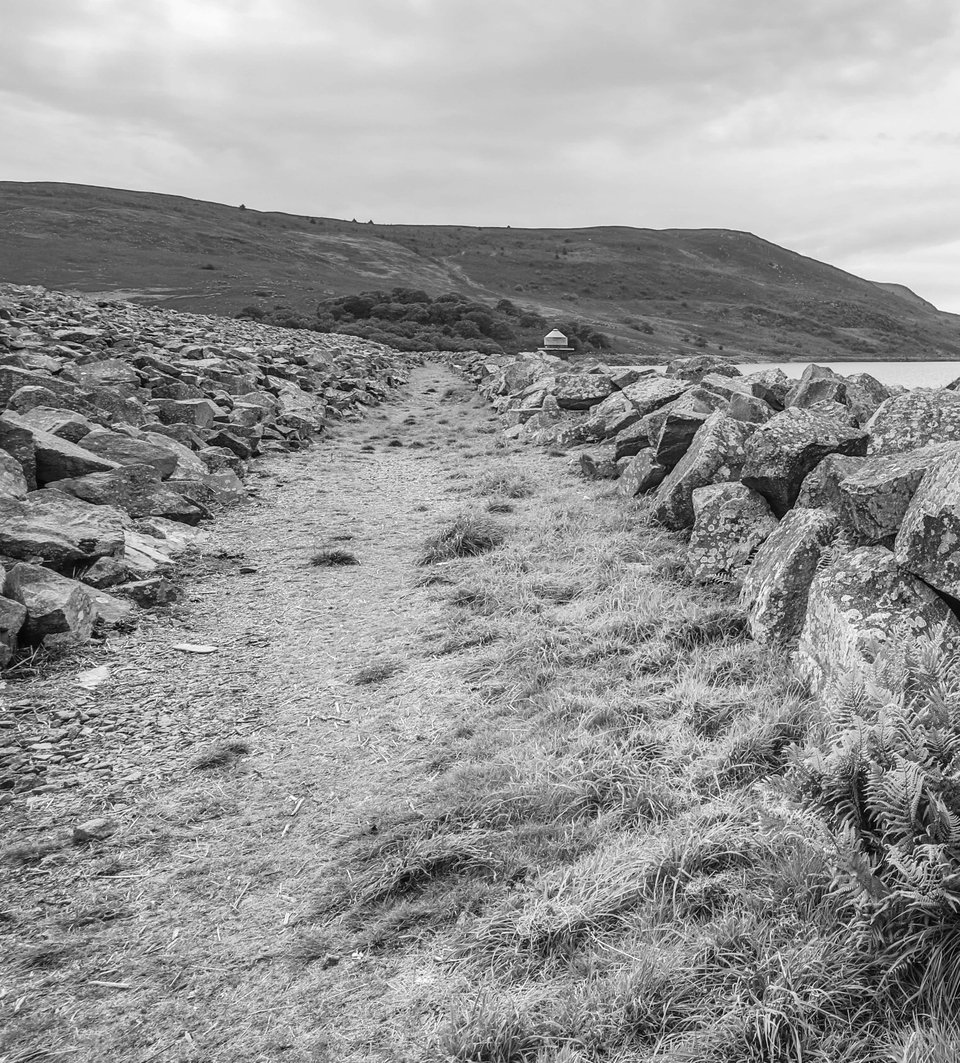
Colect
Ein Tad, daeth dy Fab i’w eni yn ein plith mor guddiedig â tharddle Hafren. Ar ei lwybr drwy’r byd gwrthnysig hwn gorlifai â chariad, gan ymarllwys i ddysgl a golchi ein traed ar gyfer gwasanaethu, fel y bydd i ffrydiau dyfroedd bywiol lifo hyd yn oed drwom ninnau. Yn dy drugaredd, dadwreiddia a lloria ein dicterau, fel y gallwn gofleidio a hyrwyddo llif y maddeuant a darddodd o’i ystlys ar y groes, a chael ein cludo, yn nyfnder y tonnau, hyd lawnder bywyd; gofynnwn hyn er lles dy fyd, ac er dy ogoniant dithau. Amen.
Cwestiynau
- Pa nodwedd yn nhirwedd Gogledd Cymru ydych chi’n ei hoffi fwyaf – a pham?
- Pa beryglon a pha fanteision allai ddod o ailagor creithiau’r gorffennol?
- Beth mae’r addewid y bydd Iesu’n dychwelyd mewn gogoniant yn ei olygu i chi?
- Sut allwn ni gofleidio cyfiawnder a thrugaredd ynghyd?
The Second Week of Advent
Rivers and Reservoirs
Remembering what was lost
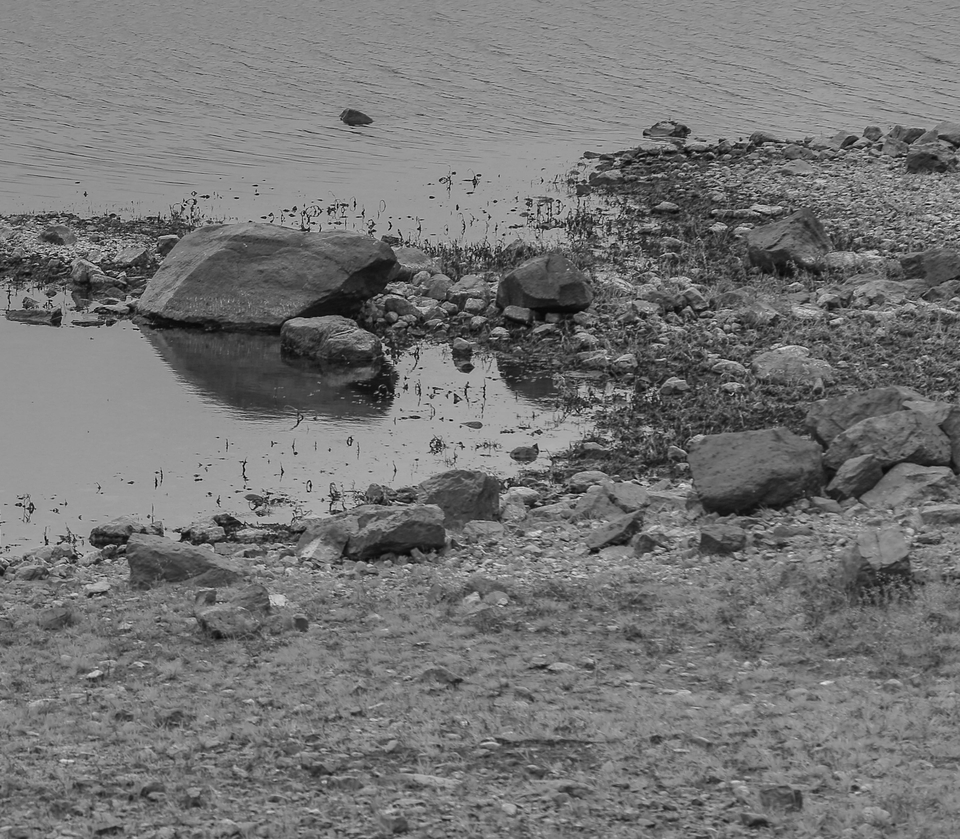
In 1965, a Welsh valley was flooded to provide water for the city of Liverpool some 40 miles to the north east. More than 50 years later, there are few incidents in the recent history of Wales (with the exception of the Aberfan disaster) which continues to shape a sense of national identity and life as does ‘Tryweryn’. For many people, the name alone is enough to evoke the story.
In 1960, Liverpool City Council had presented a private bill to Parliament that would force the residents of Capel Celyn to leave the valley. The village, its cemetery, primary school, farms, post office, roads and fields would all be flooded to create the reservoir Llyn Celyn. Using a private bill was highly unusual but it avoided the need for any kind of planning enquiry or local authority involvement. When the bill was finally presented in Parliament, 35 out of the 36 Welsh MPs voted against it. That did not prevent the bill from being passed in 1962 and eventually the 12 houses and farms were destroyed and 67 people who lived in the valley relocated, despite a sustained period of campaign and opposition to the flooding.
In 2005 the city of Liverpool offered an apology for its actions. The statement acknowledged a debt to the thousands of Welsh people who had made their homes in the city and enriched its life. It went on: ‘We realise the hurt of 40 years ago when the Tryweryn valley was transformed into a reservoir to help meet the water needs of Liverpool… For any insensitivity by our predecessor council at the time, we apologise and hope that the historic and sound relationship between Liverpool and Wales can be completely restored. People ask why apologize now. Saying sorry is an appropriate thing to do to a friend, it is part of reconciliation… a recognition that mistakes were made.’
The apology received a mixed response at the time, being regarded as too late and seen by some as adding insult to injury. For others it was a genuine acknowledgement that wrong had been committed (and by a sleight of hand) and that no such historic wrong should be left unaddressed.
The issues surrounding the creation of Llyn Celyn are complex and have become more significant in recent years as efforts have focused on maintaining the iconic status of the valley and its history. While it is true that many Welsh people benefitted from opportunities in Liverpool, the manner of making the decision, as well as the decision itself, produced deep and lasting hostility in the hearts of many Welsh people. Capel Celyn was overwhelmingly a Welsh-speaking community with a vibrant culture whose existence was ended by a Westminster system that had regard neither for the culture nor the language of the valley. It appeared less an act of disdain so much as deliberate sabotage when what was needed at that time was protection and support.
Knowing what binds us together
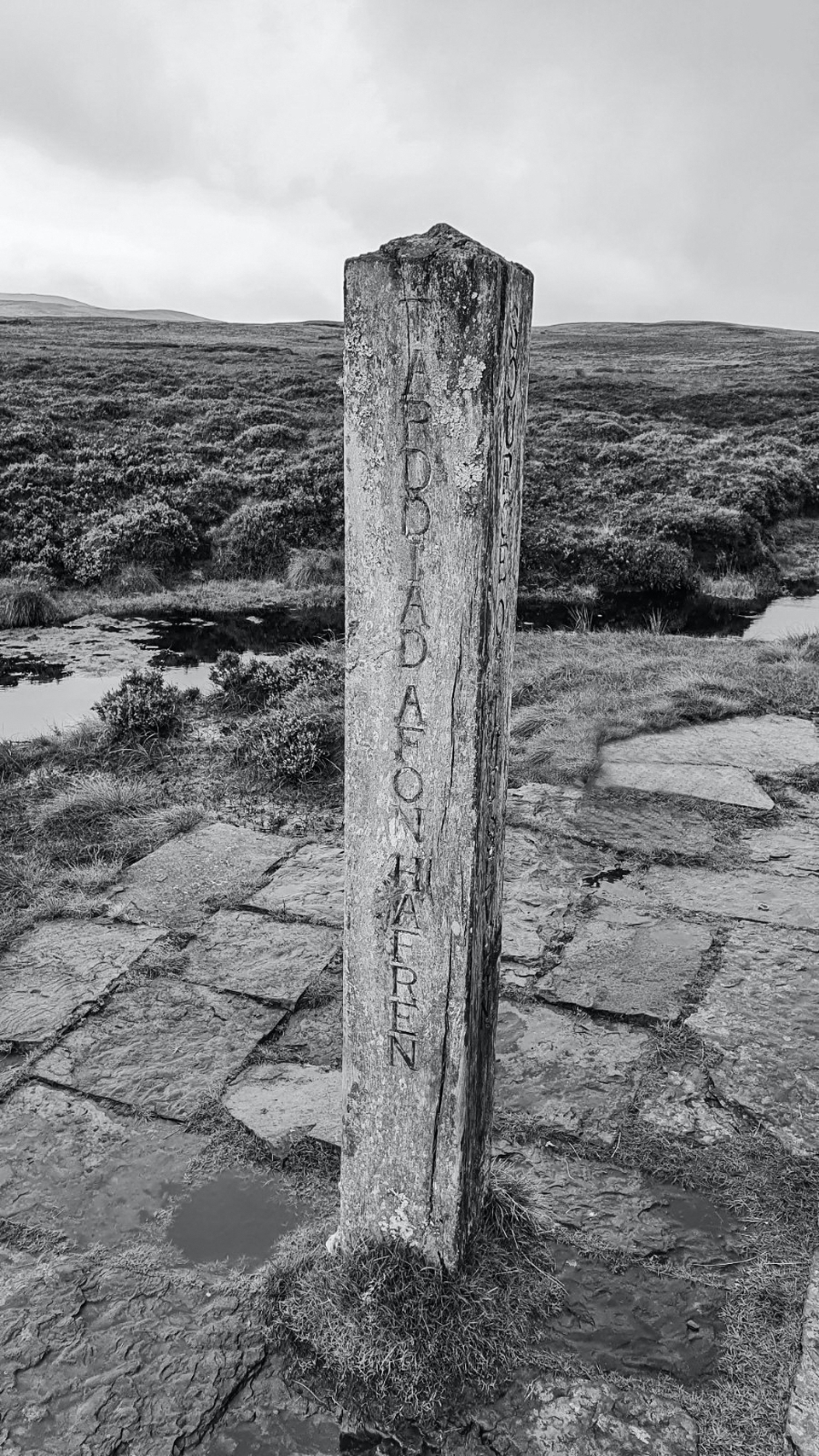
The Severn is the longest river in Great Britain at 220 miles and carries more water than any other in England and Wales. With its source at 610 metres in the rich peat bogs near Plynlimon in mid-Wales, it flows down towards the Bristol Channel, finally disgorging into the estuary near the Severn bridges. The river is regulated close to its source by the impressive Clywedog Reservoir which mitigates some of the dangers of flooding further downstream. Its concrete buttress dam is the tallest concrete dam in the UK, with a height of 72 metres and a length of 230 metres.
The building of this reservoir, like Llyn Celyn, caused opposition and protest when the Act of Parliament was passed and construction begun although these protests were significantly less than those of Tryweryn. Nonetheless, agricultural land, farms and homesteads were all lost in order to make way for the dam.
The English name ‘Severn’ is derived from the Latin ‘Sabrina’ and despite its modest origins on the Powys-Ceredigion border, the river is rich in symbolism and legend. Geoffrey of Monmouth tells the tale (‘Historia Regum Britanniae’ - History of the Kings of Britain, c. 1138) of ‘Habren’ who was the beautiful daughter of King Locrin of the Britons by his secret lover, a Germanic princess named Estrildis.
Locrin’s political marriage to Gwendolen, the daughter of King Corineus of Cornwall, ceased upon the death of Corineus when Locrin divorced her and made Estrildis his queen—and so legitimized Habren. Gwendolen raised a Cornish army against him and had Estrildis and Habren drowned in the Severn. The river took its name from the Latin for Hafren (Sabrina) to mark Locrin’s infidelity for all time. But legend tells us that Habren became a goddess of the waters thus defying the vengeful action of her jealous vanquisher.
The destination of the River Severn is at the estuary near Bristol, where the small steady bubbling of cold waters from the Cambrian Mountains issues in a huge flow into the Irish Sea. On its long journey it travels from the hills above Llanidloes to Newtown and Welshpool before it heads south towards the English border. Other tributaries swell its size as it snakes its way towards Shrewsbury, Bridgnorth, Worcester, Gloucester before its arrival at the Severn Estuary. Although these communities were not only connected by the Severn historically the fertility of the river valley for agriculture and the ability to transport goods and even people created a wealth and commerce that flourished and would not have existed but for the Severn.
Bible passages
He said to him, “You shall love the Lord your God with all your heart, and with all your soul, and with all your mind.” This is the greatest and first commandment. And a second is like it: “You shall love your neighbour as yourself.” On these two commandments hang all the law and the prophets.’
Matthew 22:37-40
By the rivers of Babylon— there we sat down and there we wept when we remembered Zion. On the willows there we hung up our harps. For there our captors asked us for songs, and our tormentors asked for mirth, saying, ‘Sing us one of the songs of Zion!’ How could we sing the Lord’s song in a foreign land?
If I forget you, O Jerusalem, let my right hand wither! Let my tongue cling to the roof of my mouth, if I do not remember you, if I do not set Jerusalem above my highest joy.
Remember, O Lord, against the Edomites the day of Jerusalem’s fall, how they said, ‘Tear it down! Tear it down! Down to its foundations!’ O daughter Babylon, you devastator! Happy shall they be who pay you back what you have done to us!Happy shall they be who take your little ones and dash them against the rock!
Psalm 137
Jesus taught that the first commandment was to love, which directs responsibility and energy towards the needs and interests of others. We can assume too easily that the command to love God and then to love our neighbour is mostly about ‘religious priorities’. The Kingdom of God, however, is very much concerned with the issues of real, everyday life. Matters of justice and forgiveness must be more than a matter of private confession or church liturgy.
The story of Tryweryn prompts us, as Christians, to ask questions about what creates identity but should also provoke us to reflect on how to respond to injustice and wrongdoing. It is such a powerful story because an act of political violence prevailed, where the ‘strong’ exercised control over the ‘weak’ and local voices were, like the dwellings, lost beneath an impenetrable watery grave.
The experience of God’s people in being driven from their land into exile provides a Biblical perspective on issues of power and control. Imperial forces subdued and forcibly relocated them, stripping them of so much that made up their identity. In words of lament, we glimpse the depths of their loss: ‘By the rivers of Babylon we sat and wept when we remembered Zion. There on the poplar we hung our harps, for there our captors asked us for songs, our tormentors demanded songs of joy; they said, “Sing us one of the songs of Zion!”’ (Psalm 137:1-3).
As they contemplated their situation, they felt grief but also a renewed consciousness of the relationship between their faith and their land. God had given them that land and revealed himself to them there. To be apart from it was to be apart from God. This was not simply ‘hiraeth’, that Welsh word that speaks of longing, nostalgia and homesickness. This was a fundamental crisis of confidence and belief: if the land had been taken from them, had God cast them off forever? Had God’s promises failed?
The last verses of the Psalm are often omitted with some embarrassment because of the way they express the human urge to reciprocate with violence: ‘Daughter Babylon, doomed to destruction, happy is the one who repays you according to what you have done to us. Happy is the one who seizes your infants and dashes them against the rocks.’ (vv. 8-9). While we recoil from the violent imagery, it remains true that if injustices are left unaddressed, the consequences can be serious. Inaction denigrates the seriousness of the original act, dismissing the injuries suffered and treating ongoing pain as a nuisance rather than a prompt to action. Inaction can also generate suspicion and resentment. In the context of ‘Tryweryn’, the invective that may accompany a ‘Cofiwch…’ (‘Remember’) slogan can become a nursing of grudges. Past wrongs should never be used as a cover for an anti-English invective that is no more or less than racism.
Remembering past injustices can also shape our self-understanding and identity in powerfully positive ways. What resulted from the Babylonian exile was a new understanding of God and the future of God’s people as a nation. They were able to move beyond the paralysis of pain and redefine and deepen their awareness of who they were.
In the New Testament the identity of Christians is focused in the person of Jesus. In the Epistle to the Ephesians, our position ‘in Christ’ as the source of our life and ultimate destination, transcends all other realities – colour, gender, ethnicity and background (2:14-16). This opens the way to discovering how we can belong to those outside of our own community and connects us to each other in a profound way. As a river connects communities so the gospel gathers the diverse parts of the human family into one. This dynamic supersedes everything else and provides the context, inspiration and means by which change really is possible.
Knowing who we are in God
We have already noted the focus of Advent is on preparing for the King. This focus has two aspects which are held within the person of Jesus Christ: his incarnation and his anticipated return. The Christian understanding of the person of Jesus is that he was fully God and fully human. When we prepare to welcome the Christmas child, it means nothing less than welcoming the ‘God-come-to us’ born in Bethlehem, ‘Immanuel’ in the words of St Matthew (1:23). We would struggle to envisage the scale of the river at its final destination if standing high in the mountains of mid Wales gazing at the trickle of water beneath our feet. Yet this is what the incarnation offers us: the Christ who is fully human, born as child and is yet fully divine, the Lord of all.
This conviction - that God was uniquely present in and one with Jesus - is crucial to how we understand the implications of his coming. Here was no prophet simply announcing news of God’s Kingdom. Jesus came to usher this Kingdom in himself and secured it in his death and resurrection. All human institutions, powers and authorities are brought within the scope of this Kingdom which is marked by justice and peace. And yet its reach starts not with a world that exists in a vacuum, ‘out there’, but with individuals and communities called to lay down past grievances, embrace forgiveness and move forward with new confidence. This has significant implications for any community carrying grudges and hurts.
The anticipated return of Jesus is what we affirm in the Apostles’ Creed when we speak of Christ coming ‘to judge the living and the dead’. This act of sovereign love completes the work began in Bethlehem and is visually captured in the book of Revelation. Dramatic pictures describe how the whole of history is held within the embrace – not the clenched fist - of God. It is this sure and certain hope that makes belief in a Sovereign God something that generates not fear but faith.
We have become ever more conscious of our frailty and of life’s uncertainty in the light of the Covid-19 pandemic. It has provided an uncomfortable reminder that we are not fully in control of our destinies. We can take courage, then, from the witness of Scripture and the teaching of the Church that all life takes place within the permissive will of God. Standing at the beginning and end of time is the Saviour Christ in whom and through whom and for whom we and every living being were created.
The Christian hope is that at the end of the age we will find ourselves in the presence of an eternally just but also eternally loving Father. This allows us to face death differently, turning our passing from a matter of fear into a matter of preparing to be with the one who is our source and our destination, Christ from whom we cannot be parted in this life or the next.

Collect
Father, your Son came to birth among us as hidden as the Severn’s source. Through the course of this resistant world he overflowed with love, pouring himself into a basin, and washing our feet for service, that even through us may stream rivers of living water: in your mercy,
uproot and overwhelm our grievances, that we may embrace and let flow the forgiveness which issued from his side on the cross, and be carried, out of our depth, into fullness of life; we ask this for the good of your world, and to you glory. Amen.
Questions
- What feature of the North Wales landscape do you like most – and why?
- What pitfalls and positives can result from ‘dragging up the past’?
- What does the promised return of Jesus in glory mean to you?
- How do we reconcile justice and mercy?
